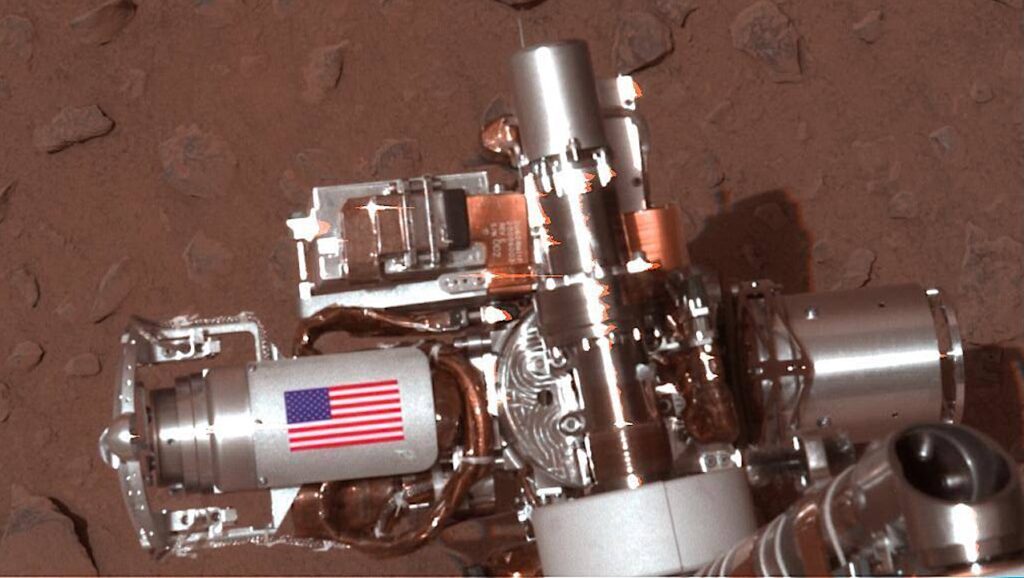Orion Heat Shield Construction
 Orion’s Heat Shield Takes Shape [Watch], NASA
Orion’s Heat Shield Takes Shape [Watch], NASA
“Technicians at Textron Defense Systems near Boston are applying Avcoat ablator material to some 330,000 cells of a honeycomb on the heat shield of NASA’s new Orion spacecraft. To ensure that each cell is filled correctly, they are individually X-rayed and a robot is used to machine the material, sanding off fractions of an inch so that the heat shield matches Orion’s precise plans.”









329.997 … 329,998 …329,999 … 330,000 …Whew!
OK, roll in the next one!
I am aghast at the labor.
Yeah kind of screams out for a robotic solution. A robot machines the material. Can’t they get a robot solution to do this part? It could also probably be used for several different materials, not just Avcoat. Definitely still xray it.
Subject to correction, I don’t believe this is a reusable heat shield. There are less costly solutions available and NASA developed them some time ago, e.g., PICA.
Or PICA-X which is supposedly better and co-developed with SpaceX for Dragon etc. Seems to work more than well enough.
More than well enough, the Dragon heatshield is lunar return capable. Elon has been working Dragon as a BEO vehicle from the start.
People, specifically congressmen, senators, and their staffers, refuse to believe this. They are still in the “Only NASA” mentality.
I am not saying SpaceX is the holy grail; however, the private poo-pooing of Dragon as a solution to BEO missions really needs to stop. Its getting old.
Its deja vu all over again. Exactly the same materials and process and even the same company (bought out once or twice) as used for Apollo. Why use the new stuff when we can spent exorbitant amounts of money for the old way?
During Apollo, only women were hired to fill honeycomb with ablative material (statistically they are better at detailed items than men).
Filling each hole is tedious, I think having to examine each one of 300,000 xray images is really dry.
Yes this is exactly why MPCV will fail to provide an effective vehicle. These techniques are so labour intensive that the cost is prohibative and the program will be cancelled since it cannot be adequately funded. Read SLS as well.
When you compare the manufacturing and instalation techniques used by SpaceX, the only conclusion you can draw is that the only driver for choosing this approach is jobs.
Dragon, CST-100 or even DC will eliminate MPCV from consideration even though they are designed initially for LEO. I believe that the capsules are capable of an expanded development path to BEO. Not sure about DC as I’m not au fait with it’s heat shield composition.
SpaceX obviously already intends to continue development of Dragon into a BEO craft. Boeing’s a big lukewarm “maybe” about CST-100, they appear to be just interested enough in it to get NASA money, and not much more.
As a lifting body that weighs twice as much as Dragon, I don’t see how Dream Chaser would be competitive as a BEO craft. A lifting body is only useful for re-entering Earth’s atmosphere, after all.
Wasting billions of dollars. This is how you do not do it.
Labor-intensive application of Orion’s ablative heat shield is a feature, not a bug, in the political calculus of the Space Launch System. This technique also fits nicely within the rewards inherit in a cost-plus contract. What incentive do any of these SLS/MPCV contractors have drive for efficient operations or reduced total cost of ownership for NASA? None.
Excellent point. Contracts can be either fixed-price or reimbursement-based. In the latter case it is to the contractor’s benefit to increase cost, and it’s easy to do.
But in a cost-reimbursement contract the contractor gets paid only as it can prove the money is actually spent, and only a specified percentage is designated profit. The company can only spend money on R&D if the government tells it to do so.
Under a fixed-price contract (favored by SpaceX) the contractor is paid for achieving milestones, not for incurring costs. This provides the potential to save a large percentage of the cost by efficient management and innovation, and actually keep it all to use for future R&D.
I can only say that Elon Musk must be laughing his A$$ off when viewing this.
I guess Textron never watched the Discovery Channel’s How It’s Made and How Do They Do It to see out industry automates tasks like these.
It was good amusement. I laughed for 5 minutes until I realized I was paying for this disaster and then started to cry.
Musk got ALL of his heat shield technology from NASA, and he is very appreciative of that. So he is riding his Dragon on NASA’s billion dollar coattails. That’s partly what NASA’s function is. As for the Orion heat shield, there was a technical review of several candidate materials and Avcoat won. A big part of Avcoat winning was that it had higher reliability/confidence since we know that what happened to Columbia could happen again for the slightest miscalculation or misalignment. PICA had too many uncertainties seeing how it had never been used except in a single billet heatshield for the tiny Stardust entry probe.
Yep, use the really old, really slow, and really expensive design option. That is clearly the basic design strategy behind SLS/Orion…
Why not put the honeycomb under vacuum and submerge it in the ablator?
I like how people talk about industrial manufacturing processes as if they actually understand the cost of tooling and jigging. As much as it’d make sense to use a motion system to automate this, do you guys actually know how much it would cost to build a rotary table the size of that heatshield with the positional accuracy tolerances needed at that diameter as well as the 5 axis head that would be needed to actually mount the applicators on?
Don’t believe me? Go look up the costs to buy a 2 axis indexer for a CNC machine that has just enough positional accuracy 6 inches/150mm out within the .00x degree range easily will hit you into the 40k+ mark. Now imagine yourself building a giant turntable (Millions+, plus all the fun of “Cost Plus” reaming you) and then a 3 axis gantry capable of positional accuracy across the whole range (You wouldn’t want to miss your cell when injecting your ablative material would you?) and then the 2 axis head that would fit onto the gantry that would dispense the material (For reference, any decent industrial CMM or machining center of that size would go far into the millions+ range already. Those are the ones you drive your car onto.)
Of course you could loudly complain about what they’re doing in this video, because paying a team of people with a salary between 50-100k a year is so expensive compared to dumping tens+ millions into developing an automation process that might not be used again due to Congressional dickery or you can basically hire some techs to handle this. This totally would make sense if you actually had the Orion in serial production for the heatshields right now
Oh and that robotic arm? That’s basically just following a contour, you’re not actually filling each cell. So yeah, there goes the whole “but what about the robotic arm at the end!”
Nicely said.